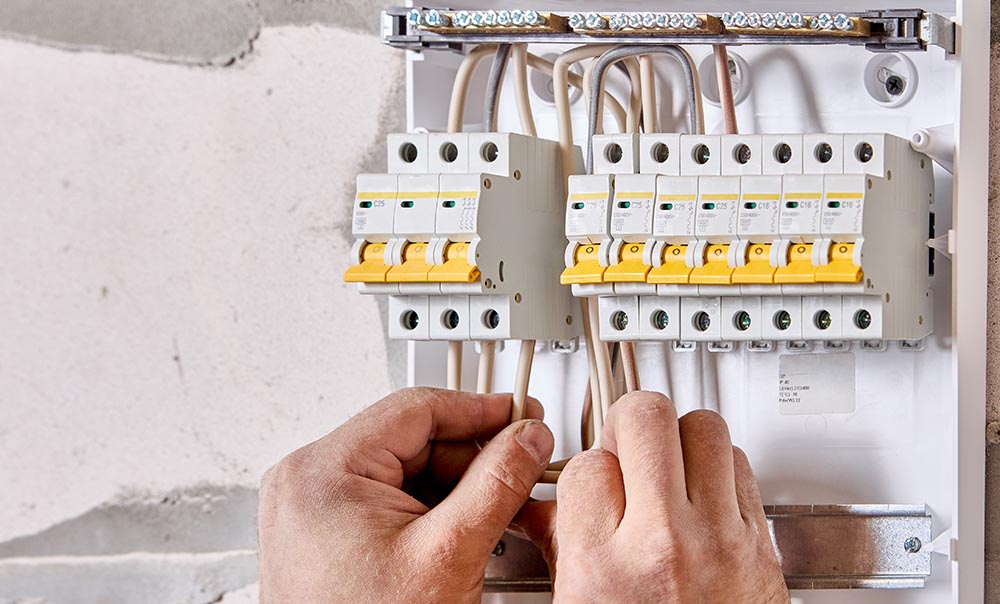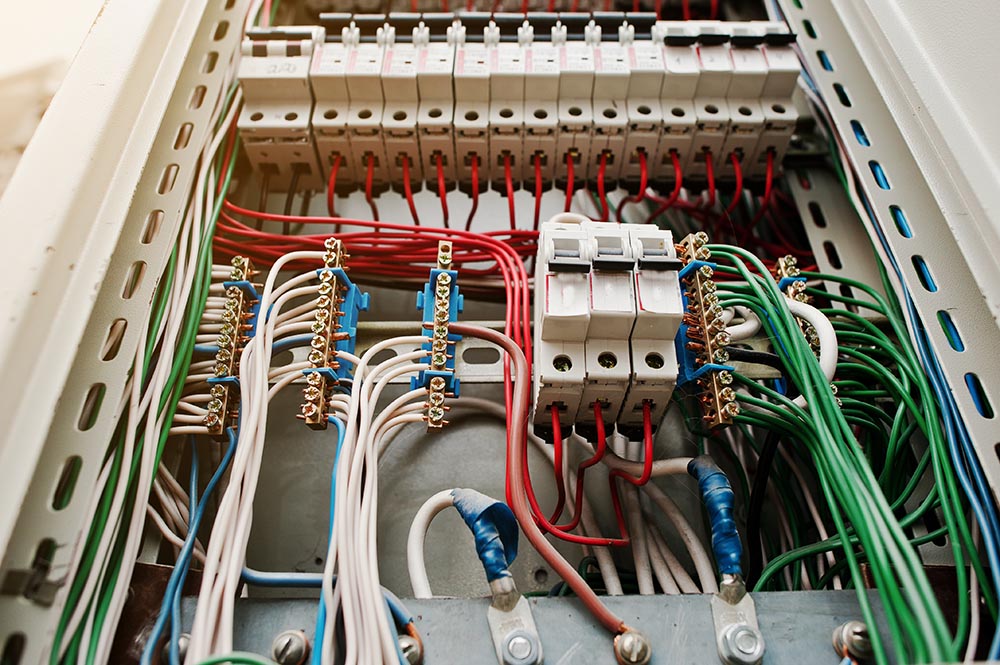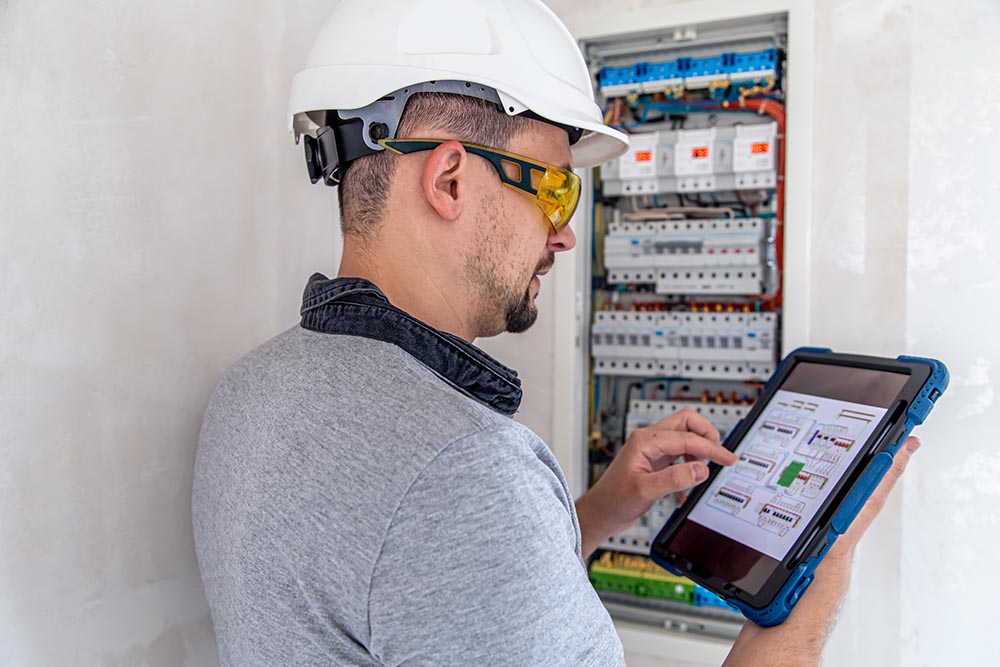If ever you’ve found yourself without power in your home – even if only for half an hour – you’ll know just how much we have come to rely on electricity. In this article, we’re going to focus specifically on electrical consumer units, which are effectively the beating heat of your home.
We’re going to look at how often you should change a consumer unit and whether you can replace a consumer unit all by yourself. Here’s everything you need to know on the subject…

What is a consumer unit?
An electrical consumer unit is one of the most important components of your home’s electrical system. It is essentially the primary control and distribution of your power supply.
Consumer units power all of the circuits in your home and they are made up of a number of different parts, including the mains switch, the circuit breakers, and the residual current devices.
Consumer units are typically referred to as fuse boxes and even though they both serve a similar function; they are fundamentally different. Consumer units are actually a newer and safer version of an outdated fuse box, which in most cases is no longer compliant with modern regulations.

Consumer unit vs Fuse box
Yes, both a fuse box and a consumer unit will switch off the main power supply in the event of a surge or power overload, but the way they detect and respond to such incidents is different.
- For consumer units, when tripping occurs, it will cut the power supply to the specific overloaded circuit. This makes it far easier to identify and replace the faulty circuit.
- For fuse boxes, when tripping occurs, the wiring in the fuse can melt causing it to trip off all of the power – thus making it hard to identify the root cause of the problem.

How often should a consumer unit be replaced?
So, how often should you have the electrical consumer unit in your property replaced, and why? You may need to replace your consumer unit for a number of different reasons. The main reason is that it may be dated, faulty, and no longer provides your home with sufficient protection.
Ideally, you should have your consumer unit inspected by a certified electrician at least every 10 years. It’s always worth doing it more frequently to be on the safe side, but once every 10 years is sufficient.
That way, if there are any problems, your electrician will easily be able to recommend a replacement consumer unit.
For landlords who rent out a property, the consumer unit must be checked out every 5 years – or when new tenants move out / move in. This is to ensure their health & safety and fair energy consumption.
The same applies to selling your house; a thorough electrical inspection must be carried out to ensure that everything is functioning well and is above board.

Is it worth upgrading your consumer unit?
And is it worth upgrading your consumer unit? What about if your current unit isn’t faulty?
- Improve your home’s electrical safety: the primary advantage of upgrading your consumer unit is to improve the overall safety of your home’s electrical system. Some of the older consumer units don’t have residual current devices. This can lead to a serious risk of electrical fires if not addressed. Not only that, but certain plastic consumer units are less safe than metal-clad units.
- To be more compliant with the law: another great advantage of upgrading your consumer unit is to bring your electrical system up to current standards and protect your home from any potential problems. Again, the systems should be checked at least every 5 to 10 years to ensure compliance.
- Improved energy efficiency: in addition to that, when you replace your consumer unit with a modern, safer unit, it can also improve your home’s energy efficiency significantly. Today, when energy bills are rising through the roof, this can be a serious advantage. A properly working unit will keep power loads under control, help you conserve valuable energy, and save money.
- More peace of mind: and of course, when you upgrade your consumer unit to the latest, top-of-the-line system you’ll be able to relax in the knowledge that you and your family are perfectly safe. You’ll be able to sleep easier knowing that the chance of your home suffering an electrical fire has been practically eliminated.

Can you change a consumer unit yourself?
And can you change a consumer unit yourself? The shower answer is no; absolutely not. A consumer unit must be installed by a certified electrician to ensure that everything is above board. Without the proper training and experience, you will be taking a significant risk by attempting to install it yourself. One wrong move and end in disaster, just as loose wiring could quickly deteriorate into a highly dangerous electrical fire.
It is never worth the risk, of trying to install a consumer unit by yourself. Our advice is that you find a reputable and well-established electrical systems supplier and have them install a consumer unit on your behalf.
It may be tempting to try and save money by quickly following a YouTube tutorial and doing it yourself, but any mistakes will be far costlier.

Conclusion
Let’s recap what we’ve learned about consumer units:
- An electrical consumer unit is one of the most important components of your home’s electrical system. It is essentially the primary control and distribution of your power supply.
- Consumer units should be checked every 5 to 10 years and replaced as necessary.
- You can upgrade your consumer unit for improved electrical safety, compliance, energy efficiency, and indeed peace of mind.
- No, you cannot replace a consumer unit yourself – not unless you are a certified and experienced electrician.










